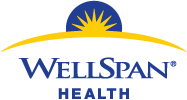It’s called telestroke, and it helped change this woman’s life
(Gettysburg) — Telemedicine can sound awfully intimidating.
Does it mean Skyping with your doctor?
How about using lots of data to figure out the best treatment plan?
Or are robots entering the world of health care?
Not quite.
If you can move past thoughts of a strange new world and actually make the leap to telemedicine, it can save your life in some cases.
Take this case
“Blood pressure was high. I knew that. Dizzy, blurred vision. I had some blurred vision. Unsteady on my feet. I was nauseous in my stomach.”
Bridget Cramblitt is remembering the day she had a stroke.
“I knew for a Saturday morning, that that wasn’t right. I had my children call 911.”
Cramblitt, who works as a cardiology technician at WellSpan’s Gettysburg Hospital, asked her kids to come over and watch her. When they saw her fainting, they immediately got her to Gettysburg hospital. Once she arrived, they rolled in a computer while a doctor examined her in-person.
“Ideally, you would want to have a neurologist in the ER, stationed there for every emergency that you have. But the reality is, a lot of small community hospitals like Gettysburg, we don’t have that luxury. So this is kind of the next best option, is to have that expertise available through telemedicine,” says Dr. Stefan Rosenbach, one of the emergency room physicians at the hospital.
He works with patients to quickly get them comfortable with the idea of telemedicine. It’s kind of like Skyping with a doctor or specialist, to get care as soon as possible. In Cramblitt’s case, she couldn’t talk because of the stroke. But she remembers being ready to give it a go.
“You’re going to see a doctor on a screen. You’re able to see the physician, you’re able to talk to him. He’s able to assess you, watch your actions, things like that.”
Again, as she was getting stroke treatment through telemedicine, she couldn’t talk.
But, the neurologist could tell from her symptoms that she was having a stroke.
Just like that, a critical drug known as tPA was administered. It can significantly improve the chances of recovering from a stroke if given quickly.
How it can make a difference
“We like to say time is brain,” says Dr. Rosenbach.
“Meaning that we really have to act quickly, we have to gather a lot of information, we have to make decisions about the medications. We can’t safely give those medicines if it’s been greater than four and a half hours. So it’s very critical that we try to get the information that we need and make decisions about these medicines in a very time-sensitive way.”
Bridget Cramblitt says she certainly benefitted from acting quickly once she started to feel woozy. She immediately asked her kids to watch her, and they got her to the hospital. And once she was there, she could get treatment that wouldn’t be available in Gettysburg without telemedicine. All of it came together, and she’s grateful.
“Would I be able to get speech back? Would I have, over time, lost some movement?”
“I don’t know.”
“I didn’t know what was going on so with that, they were able to assess me and move quickly. By that evening, I was speaking. I was stuttering, but I was speaking. I could at least get my words out and talk to everyone.”
Cramblitt says she now feels more confident she’ll get the life-saving treatment she needs right there. And if she needs to get transferred to a larger hospital after the immediate trauma case, so be it. Based on her experience, she’s now comfortable talking about it with her patients.
She says: “Don’t feel as though you have to drive further for better treatment. That treatment is here and it’s in our ED. We can get you where you need to go should we have to send you out, but we’re going to get you stable here, and we have the abilities to do that. And it worked for me.”
“It was awesome. And I walked with my family right out the front door. It was awesome, yeah, it was good.”
Telemedicine has its issues. It requires a steady internet connection, and a patient and doctor who are willing to try something that can feel a little impersonal. But for Bridget Cramblitt, it worked out as well as it could have.
A note of disclosure: WellSpan Health underwrites content for this website.



